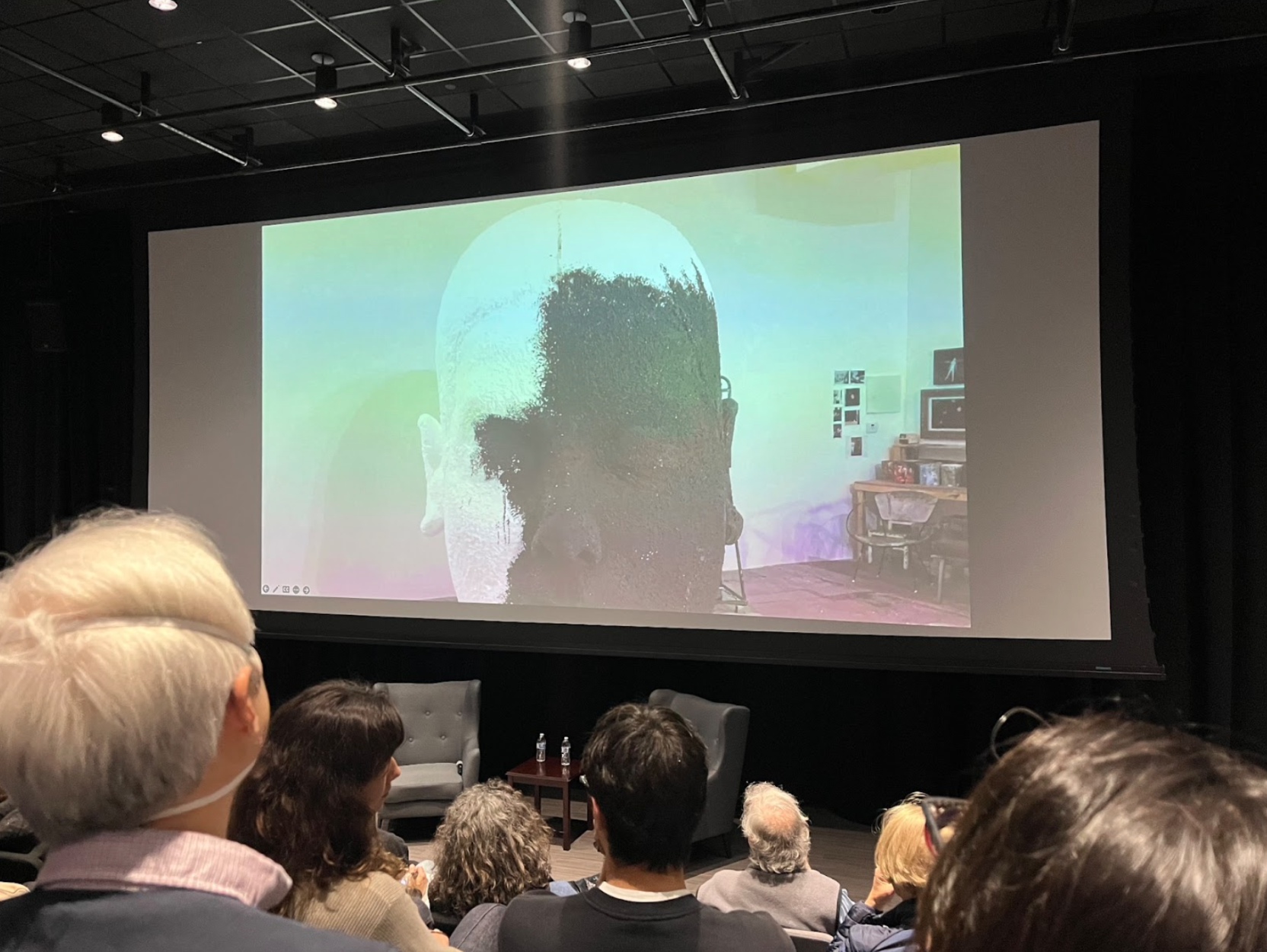Artist Enrique Martínez Celaya joined art and art history professor Alexander Nemerov for a conversation about the intensities and urgencies of art-making last Wednesday.
The event was held in McMurty’s Oshman Hall and featured discussions of Martínez Celaya’s work as a contemporary artist, author and former physicist. Many members of Stanford’s tight-knit art and art history community were in attendance, creating an intimate and casual atmosphere in the small venue.
Entering Oshman Hall was a “warm welcome on a chilly, rainy day,” said the University’s assistant vice president for the arts Anne Shulock in her introduction to the conversation.
Nemerov, who is well-known for his popular art history courses, opened by reflecting on the personally transformative experiences he had after seeing Martínez Celaya’s artwork in his studio and shows.
Martínez Celaya’s art creates “something sanctified in the air” and an “atmosphere of urgency,” Nemerov said.
Images of Martínez Celaya’s pieces – ranging from oil paintings, sculptural work and installations – were projected in a slideshow behind the two speakers, showcasing striking pieces like “Marjorie (The Companion)” and “The Forgotten.” The artist’s emotive subject matters were rich in impact, and Martínez Celaya’s work complemented the conversation’s insights.
During the conversation, Nemerov took on the role of reflective interviewer: investigating Martínez Celaya’s motivations and approach to practice, while engaging the audience.
Both speakers dove into problematic theatricality in artwork, poetic equations within a painting and the childhood traumas and experiences that can shape someone for the rest of their lives.
Martínez Celaya described his artistic practice as a matter of “life or death.” The intensity of his work was evident and nuanced, which he connected to his background as a Cuban exile, his current experiences as a father and his inescapable identity as an artist.
“Art is not about numbers,” Martínez Celaya said. He described his experience with art making as being “reoriented and returned to the world with a new vitality.”
The conversation was not without controversy. During the Q&A, an audience member inquired about potential contradictions within Martínez Celaya’s artistic practice: Being signed to United Talent Agency, a company representing major entertainment talent, Martínez Celaya’s authenticity was implicitly put into question.
Martínez Celaya answered the question by pointing to the “hard line” he draws between the personal and visceral experience of art-making and his involvement within the agency.
Another audience member asked Martínez Celaya about the ways that everyday people, regardless of traumatic or life-altering circumstances, can access the intensity and urgency of a moment like Martínez Celaya.
Martínez Celaya answered with a question: “What wakes you up? Now is the moment, try everything.”
The conversation flowed and paused with careful thought, free of the rigid formalities that may restrict other academic conversations. It was clear to audience members that Martínez Celaya and Nemerov, who fostered a relatively casual and comfortable dialogue, genuinely cared about the substance behind the conversation.
This care was infectious, as Nemerov and Martínez Celaya urged audience members to live authentically and intensely, as embodied in Martínez Celaya’s life and artworks.
The talk, which was structured as a personal conversation, was enriching in its exploration of Martínez Celaya’s art practice and Nemerov’s experience of it. Inspirational and stimulating, it reflected the potential in genuine artistic dialogue on campus.
Editor’s Note: This article is a review and includes subjective thoughts, opinions and critiques.
